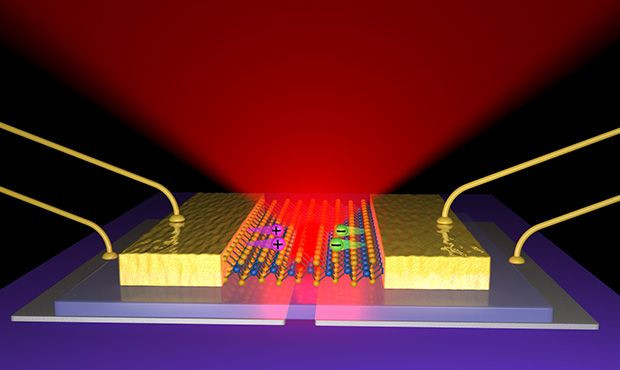Thinnest LEDs Built That Are ‘Only’ 3 Atoms Thick, Represents A ‘Huge Leap’ For Nanotechnology

Light-emitting diodes are commonly found in TV screens, computer monitors and light bulbs. While the two-lead semiconductor light sources are known to be small, scientists have recently built the thinnest possible LEDS that may be stronger and more energy-efficient than their thicker counterparts.
“We are able to make the thinnest possible LEDs, only three atoms thick yet mechanically strong. Such thin and foldable LEDs are critical for future portable and integrated electronic devices,” Xiaodong Xu, a University of Washington assistant professor in materials science and engineering and in physics and co-author of the paper, said in a statement.
University of Washington scientists built the super-thin LEDS using tungsten diselenide – a member of a group of two-dimensional materials that are known to be the thinnest semiconductors in existence.
“These are 10,000 times smaller than the thickness of a human hair, yet the light they emit can be seen by standard measurement equipment,” said Jason Ross, co-author of the paper published in Nature Nanotechnology. “This is a huge leap of miniaturization of technology, and because it’s a semiconductor, you can do almost everything with it that is possible with existing, three-dimensional silicon technologies.”
The new LEDs are 10 to 20 times thinner than those used in most consumer electronics. While the technology has yet to be integrated in existing electronic devices, researchers say this proof-of-concept can lead to ultrathin, lightweight, and flexible photovoltaic cells, LEDs, and other optoelectronic devices. More specifically, the researchers point to how the LEDS can be used to run nano-scale computer chips.
“A promising solution is to replace the electrical interconnect with optical ones, which will maintain the high bandwidth but consume less energy,” Xu said. “Our work makes it possible to make highly integrated and energy-efficient devices in areas such as lighting, optical communication and nano lasers.”
In their experiment, researchers built the LEDs from flat sheets of tungsten diselenide. Researchers extracted a single sheet of this material – just a few atoms thick – using a technique inspired by the 2010 Nobel Prize in Physics-winning work on graphene by Andre Geim and Konstantin Novoselov of the University of Manchester in England.
The research team plans to find more efficient ways to produce these LEDs and understand the differences when the two-dimensional materials are stacked in different ways.
© Copyright IBTimes 2024. All rights reserved.






















